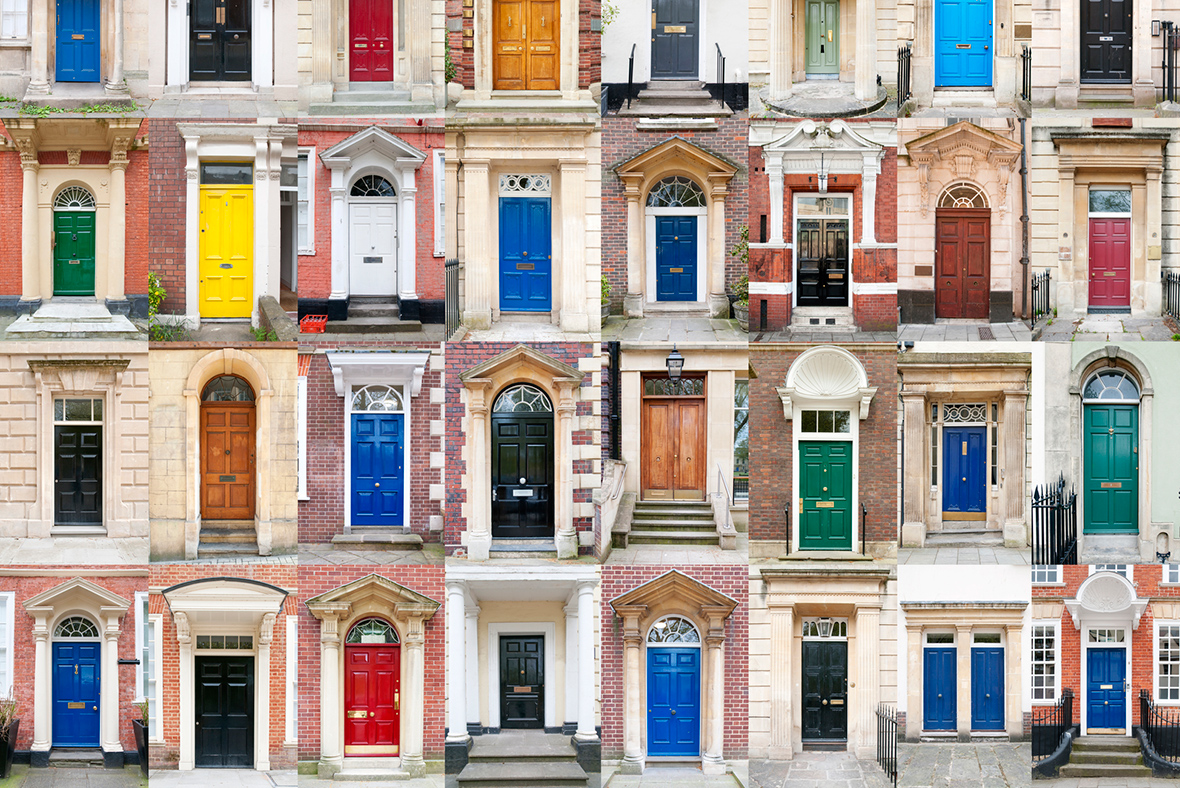
Slowly but surely through 2016, the headline rate of house price growth has slowed in the UK. What had been motoring it before — the rapid pace of price growth in London — is conking out as affordability issues for first-time buyers and tax hikes on expensive and investment property subdue demand in the city. Brexit uncertainty isn't helping either.
According to the latest data from Land Registry, the annual rate of growth for the average UK house price slowed from 7.7% in January to 6.9% in October. In London, this is more pronounced: a slowdown from 13.5% in January to 7.7% in October. So what does next year hold for house prices?
UK house prices: What 2017 means for the property market
We look at what property and housing experts say will happen to the market in the new year.

Slowly but surely through 2016, the headline rate of house price growth has slowed in the UK. What had been motoring it before — the rapid pace of price growth in London — is conking out as affordability issues for first-time buyers and tax hikes on expensive and investment property subdue demand in the city. Brexit uncertainty isn't helping either.
According to the latest data from Land Registry, the annual rate of growth for the average UK house price slowed from 7.7% in January to 6.9% in October. In London, this is more pronounced: a slowdown from 13.5% in January to 7.7% in October. So what does next year hold for house prices?
UK house prices: What 2017 means for the property market
We look at what property and housing experts say will happen to the market in the new year.

Slowly but surely through 2016, the headline rate of house price growth has slowed in the UK. What had been motoring it before — the rapid pace of price growth in London — is conking out as affordability issues for first-time buyers and tax hikes on expensive and investment property subdue demand in the city. Brexit uncertainty isn't helping either.
According to the latest data from Land Registry, the annual rate of growth for the average UK house price slowed from 7.7% in January to 6.9% in October. In London, this is more pronounced: a slowdown from 13.5% in January to 7.7% in October. So what does next year hold for house prices?
"It would be an understatement to say this year has not gone as expected," said Mark Hayward, managing director of the NAEA. "However, the property market is mostly still feeling the effects of events which happened last year... Next year, we expect it'll be more of the same; there won't be a 'property Armageddon', but things won't get much better for first time buyers, and those looking to up or downsize."
Housing supply will probably not improve
Underpinning house prices is a protracted supply shortage in some areas of the country, particularly London and the south-east of England. We are building fewer than 150,000 new units a year in England and Wales. The government is targeting a million new homes by 2020, so that number has to drastically increase.
More government money is being funnelled to housebuilding, planning laws are being relaxed, and public land is being freed up for development. Will it be enough? Who knows. But even if it is, the effects will not be felt in 2017, so the supply problem will persist, offering substantial support to house prices during the year.
The property firm JLL is predicting that new housing starts in England will actually drop in 2017. "Although levels of new housing delivery were still woefully low prior to the referendum at least the direction of travel was positive and encouraging," said Neil Chegwidden of JLL's residential research team. "This will now fall back again."
London's markets are slowing down
In London, prime areas are still licking their wounds from the tax hikes. Prices are falling in the likes of Kensington and Chelsea, though these drops are partly offset by rapid price growth in outer areas, such as Barking & Dagenham, where property is cheaper and homebuyers and investors are flocking there in search of value. Affordability issues for first-time buyers in the city will continue to bite, however.
The estate agent Knight Frank forecasts a 1% fall in London house prices during 2017, compared to 7% growth the previous year. "Looking into next year we believe that the slowdown in prices which has been evident in central London over the past 12 months will spread to the wider region, with Greater London prices down marginally in 2017," Knight Frank said.
"This slowdown in the capital will likely be experienced across the rest of the country with price growth down notably on 2016 levels." It forecasts 1% house price growth in the UK during 2017, down from 5% in 2016.
House price growth is rippling out from London
The estate agent Savills predicts zero growth in UK house prices in 2017. But London's slowdown is driving more buyers out to neighbouring regions, where they can find cheaper property, or get more for their money if they currently own a home in the city and want to cash in on recent gains. And that is sending prices in these areas higher.
At an annual rate of 7.7%, London was knocked into third place in October in the regional league table for house price growth, according to official figures. In second place was the south-east, which saw prices rise 9.1%, and in the top spot was the East of England, with 12.3% growth.
"We expect the strongest price growth to be the south-east and East of England over the next five years, with price growth in London curtailed by affordability pressures," said Lucian Cook, director of residential research at Savills.
"Towards the end of this period, markets in the Midlands and the North will show more capacity for house price growth, though much will depend on local economic drivers. Tax changes are expected to cause investors to shift their focus to some of these higher income yielding lower value markets."
Demand will be limited but supported by ultra-low interest rates
Demand will continue to receive support from the Bank of England's ultra-low base rate, which is unlikely to be hiked as the prospect of a messy Brexit hangs over the economy, and various government schemes for first-time buyers, such as shared ownership and Help to Buy.
But transactions may still fall as fewer buy-to-let investors enter the market amid tax rises for landlords. "Greater caution among homebuyers is expected to translate into lower transaction levels across the market," said Savills' Cook. "Overall we expect transactions to fall by 16% over the period to the end of 2018 before gradually recovering back towards the current level of 1.25 million.
"We expect mortgaged buy-to-let investors to be particularly affected given the 3% stamp duty surcharge they now face, the reduced tax relief they are able to get on mortgage interest and the prospect of greater mortgage regulation."
Political wildcards
There are a number of political wildcards on the horizon. It's not clear how they will impact the housing market, but the risk is there.
Brexit is the biggest challenge. The government is set to begin formally exiting the EU by March 2017. The negotiation process will be complex, difficult, and fraught with disagreement, creating a cloud of uncertainty over the economy.
This could deter investors and weaken demand from ordinary homebuyers if the economy takes a turn for the worse. On the other hand, London in particular may see a boom in foreign investment because of sterling's Brexit-related weakness. Nobody really knows what will happen.
The property firm JLL is predicting that new housing starts in England will actually drop in 2017. "Although levels of new housing delivery were still woefully low prior to the referendum at least the direction of travel was positive and encouraging," said Neil Chegwidden of JLL's residential research team. "This will now fall back again."
London's markets are slowing down
In London, prime areas are still licking their wounds from the tax hikes. Prices are falling in the likes of Kensington and Chelsea, though these drops are partly offset by rapid price growth in outer areas, such as Barking & Dagenham, where property is cheaper and homebuyers and investors are flocking there in search of value. Affordability issues for first-time buyers in the city will continue to bite, however.
The estate agent Knight Frank forecasts a 1% fall in London house prices during 2017, compared to 7% growth the previous year. "Looking into next year we believe that the slowdown in prices which has been evident in central London over the past 12 months will spread to the wider region, with Greater London prices down marginally in 2017," Knight Frank said.
"This slowdown in the capital will likely be experienced across the rest of the country with price growth down notably on 2016 levels." It forecasts 1% house price growth in the UK during 2017, down from 5% in 2016.
House price growth is rippling out from London
The estate agent Savills predicts zero growth in UK house prices in 2017. But London's slowdown is driving more buyers out to neighbouring regions, where they can find cheaper property, or get more for their money if they currently own a home in the city and want to cash in on recent gains. And that is sending prices in these areas higher.
At an annual rate of 7.7%, London was knocked into third place in October in the regional league table for house price growth, according to official figures. In second place was the south-east, which saw prices rise 9.1%, and in the top spot was the East of England, with 12.3% growth.
"We expect the strongest price growth to be the south-east and East of England over the next five years, with price growth in London curtailed by affordability pressures," said Lucian Cook, director of residential research at Savills.
"Towards the end of this period, markets in the Midlands and the North will show more capacity for house price growth, though much will depend on local economic drivers. Tax changes are expected to cause investors to shift their focus to some of these higher income yielding lower value markets."
Demand will be limited but supported by ultra-low interest rates
Demand will continue to receive support from the Bank of England's ultra-low base rate, which is unlikely to be hiked as the prospect of a messy Brexit hangs over the economy, and various government schemes for first-time buyers, such as shared ownership and Help to Buy.
But transactions may still fall as fewer buy-to-let investors enter the market amid tax rises for landlords. "Greater caution among homebuyers is expected to translate into lower transaction levels across the market," said Savills' Cook. "Overall we expect transactions to fall by 16% over the period to the end of 2018 before gradually recovering back towards the current level of 1.25 million.
"We expect mortgaged buy-to-let investors to be particularly affected given the 3% stamp duty surcharge they now face, the reduced tax relief they are able to get on mortgage interest and the prospect of greater mortgage regulation."
Political wildcards
There are a number of political wildcards on the horizon. It's not clear how they will impact the housing market, but the risk is there.
Brexit is the biggest challenge. The government is set to begin formally exiting the EU by March 2017. The negotiation process will be complex, difficult, and fraught with disagreement, creating a cloud of uncertainty over the economy.
This could deter investors and weaken demand from ordinary homebuyers if the economy takes a turn for the worse. On the other hand, London in particular may see a boom in foreign investment because of sterling's Brexit-related weakness. Nobody really knows what will happen. But turbulence


